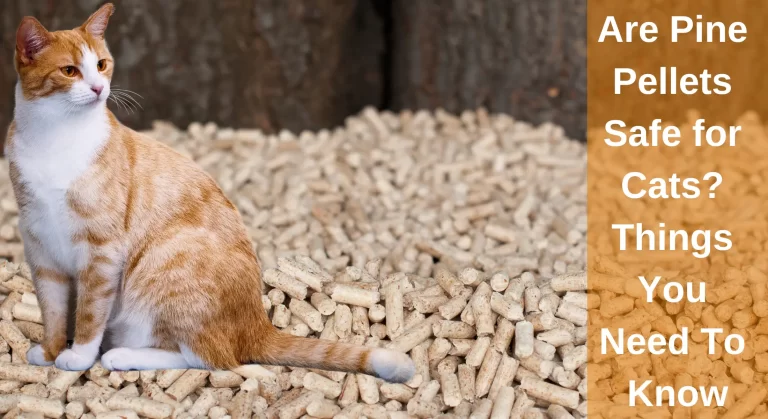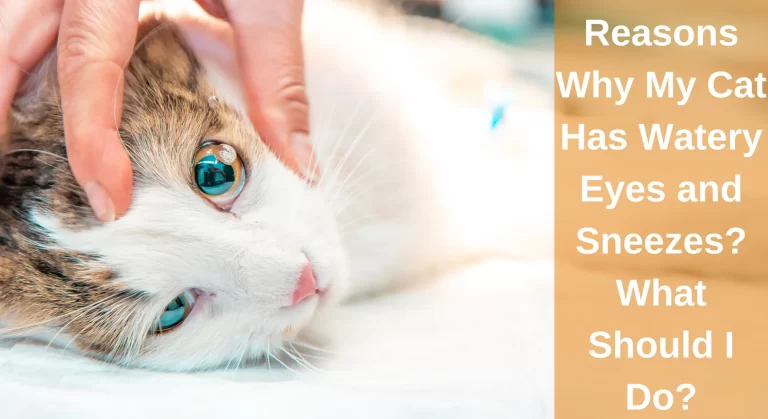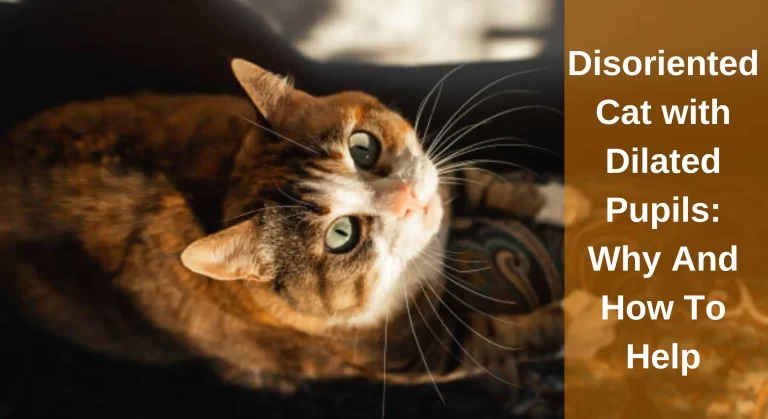Female Cat Behavior After Spaying: Expected Changes?
Feminine cats usually undergo spaying surgery as part of a comprehensive health care plan. It not only helps prevent unwanted litter but also has numerous health benefits, including reducing the risk of certain cancers and infections. While spaying is a routine procedure, it can still be a bit nerve-wracking for cat owners, especially when it comes to understanding what to expect from female cat behavior after spaying.
After the surgery, you may notice some changes in your cat’s behavior, including a reduction in aggression, an increase in appetite, changes in energy level, changes in sleep patterns, and changes in litter box habits. While these changes are normal, monitoring your cat’s behavior and consulting with your veterinarian if you notice any significant changes is important.
In this article, we will explore the changes you can expect in your female cat’s behavior after spaying and provide tips on how to help your cat adjust to her new post-surgery life.
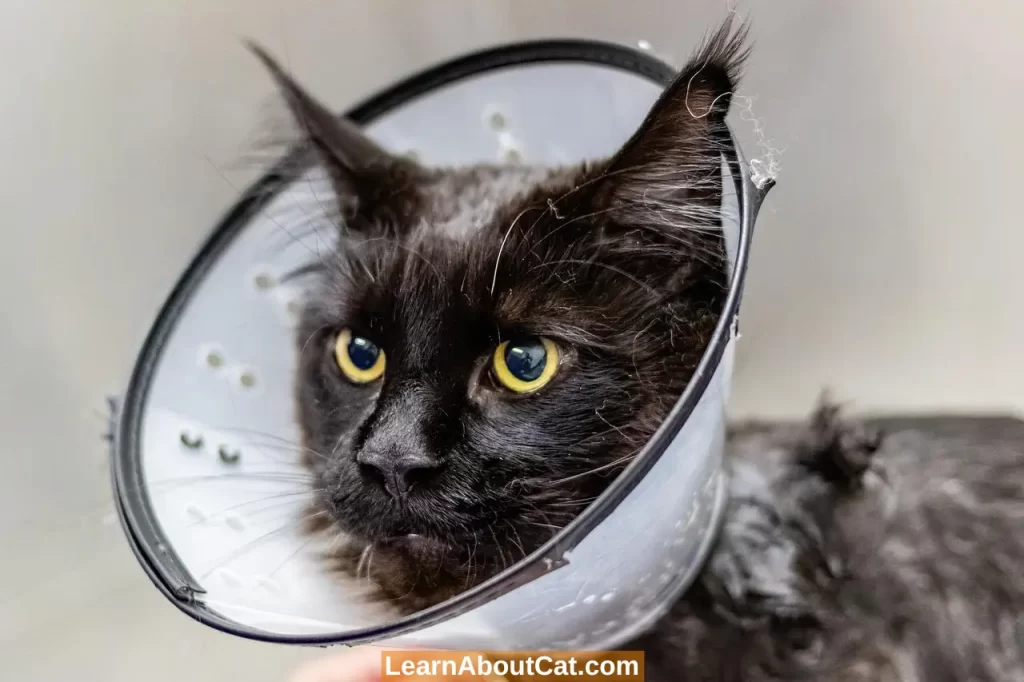
What is Spaying?
Cat spaying, also known as an ovariohysterectomy, is a surgical procedure that involves removing the ovaries and uterus of a female cat. A small incision is made in the cat’s abdomen during the procedure, usually under general anesthesia. After removing the reproductive organs, sutures or surgical glue are used to close the incision.
A licensed veterinarian performs this procedure under general anesthesia. The surgery is considered routine and is typically done when the cat is between 4 to 6 months of age.
The importance of spaying your cat cannot be overstated. It is an essential part of responsible pet ownership as it provides several benefits to both the cat and its owner.
Spaying effectively prevents unwanted litters and has numerous health benefits for cats, including reducing the risk of certain cancers and infections.
Check Out: Cat Lethargic 3 Days After Spay: Is It Normal? Things Cat Owners Should Know
Why Spaying is Important for Female Cats?
Spaying is an important procedure for female cats for several reasons:

- Preventing unwanted litters: Spaying is a highly effective way to prevent unwanted litters of kittens. By spaying your female cat, you will reduce the number of cats that end up in shelters and on the streets.
- Health benefits of spaying: Spaying can provide several health benefits for your female cat. Several types of cancer, including ovarian and uterine cancer, can be prevented with it. Additionally, it can help prevent infections such as pyometra, which can be fatal.
- Reducing behavioral problems: Spaying can also help to reduce behavioral problems in female cats. For example, it can decrease the likelihood of your cat engaging in behaviors such as yowling, marking territory, or trying to escape in search of a mate.
- Decreasing the risk of roaming and injury: Female cats in heat may be more likely to roam and become injured or lost. Spaying can help to reduce this risk by decreasing the desire to mate and roam.
Overall, spaying is an important procedure for female cats that can provide significant health and behavioral benefits. It is a safe and effective way to prevent unwanted litter, reduce the risk of certain cancers and infections, and improve your cat’s overall well-being.
Also Read: Cat Not Eating After Spay: Reasons Cat Owners Should Know
How Does Spaying Affect Female Cat Behavior?
Spaying can have an impact on female cat behavior due to the removal of reproductive organs that produce hormones. Here are some ways that spaying affects female cat behavior:

- Impact of spaying on hormone levels: Spaying involves removing a cat’s ovaries and uterus, which are responsible for producing hormones. This causes a significant decrease in hormone levels, which can lead to changes in behavior.
- Changes in your cat’s behavior: The decrease in hormone levels can lead to changes in a cat’s behavior. For example, spayed female cats may be less likely to exhibit behaviors such as yowling, marking territory, or trying to escape in search of a mate. They may also become more affectionate or more sedentary than before.
- Changes in your cat’s body: In addition to behavioral changes, spaying can also lead to changes in a cat’s body. For example, spayed female cats are at a decreased risk for developing certain types of cancer, such as ovarian and uterine cancer.
It is important to note that not all cats will experience the same changes in behavior or body after being spayed. Each cat is unique and may respond differently to the procedure. It is important to provide your cat with proper care and attention during the recovery period after spaying and to consult with your veterinarian if you have any concerns about your cat’s behavior or health.
Find Out: When Do Male Cats Go Into Heat?
What To Expect Immediately After The Spay?
- After surgery, cats will be groggy and perhaps disoriented just after waking up from anesthesia. As some cats become aggressive when in pain or feeling vulnerable, a quiet, warm location is recommended for her recovery.
- A litter box, water, and food should be readily available. Your veterinarian will advise you on the amount of food and water your cat needs, but it is usually half her normal intake. You should be gentle with your cat during the first few days after her surgery, as she might be sore around her incision.”
- Cats recovering from surgery may act differently for a few days, but experts assure you that their personalities will remain the same.
- Cats may find going to the vet and having surgery to be a frightening and stressful experience. After this treatment, your cat may act timid or jumpy for a few days. The behavior change is temporary; during this time, you can encourage her by gently petting her and arranging a quiet and warm place for her to recuperate.
- The best way to get her back to normal is to give her space, some quiet time, and a treat and be patient while she readjusts.
- The cat may exhibit tenderness and decreased activity for a day or two, but she should return to her normal self in two to three days.
Also Check Out: Why Are Male Cats Around Pregnant Female Cats?
Things to Watch Out for
- Monitor the incision for any symptoms of infection, including swelling, redness, or fluid leaking, which may call for additional veterinary testing.
- For the first 24 hours after the treatment, you should monitor how often your cat uses the litter box. Diarrhea or constipation should disappear in a few days, but if you’re concerned, consult your veterinarian immediately.
- If your cat has been overly licking her wound, there is a significant chance of infection. If your cat seems to be still exhausted or sluggish the day after surgery, contact your veterinarian.
- Hormonal changes do not happen immediately. Due to their gradual and progressive nature, your cat won’t suddenly start acting like a new cat.
- Use clicker training, engaged play on the cat’s terms, and other techniques to reinforce positive behavior in order to reverse any changes.
How to Help Your Female Cat Adjust After Spaying?
After the surgery, it is important to help your cat adjust to her new state. Here are some tips to help your female cat adjust after spaying:
- Provide a calm and quiet environment: After the surgery, your cat may be feeling uncomfortable or disoriented. To help her adjust, provide a calm and quiet environment that is free from loud noises and other stressors.
- Limit your cat’s activity: It is important to limit your cat’s activity after spaying to give her time to heal. This means keeping her indoors and limiting her access to stairs, high surfaces, and other potentially hazardous areas.
- Monitor your cat’s appetite and water intake: After the surgery, your cat’s appetite and water intake may be reduced. Any significant changes should be monitored closely and discussed with your veterinarian.
- Follow your vet’s post-surgery care instructions: Your veterinarian will provide specific instructions for your cat. It is important to follow these instructions closely to ensure a smooth recovery.
- Provide extra love and attention: After the surgery, your cat may feel vulnerable and need extra love and attention. Spend extra time with her, pet her, and offer treats and toys to help her feel more comfortable.
Following these tips can help your female cat adjust after spaying and ensure a smooth and comfortable recovery.
Also Read: How Long to Keep a Cat Confined After Spay or Neuter?
What Changes to Expect in Your Female Cat’s Behavior After Spaying?
Changing behaviors are common in female cats after spaying. While your cat is recovering, some of these actions and reactions are momentary, but others don’t show up until after your cat has healed and begun to feel more at peace. Here are some of the changes you can expect to see in your female cat’s behavior after spaying:

1. Reduced Aggression
One of the most noticeable changes in your female cat’s behavior after spaying is a reduction in aggression. This is because the surgery removes the hormones that can cause cats to become territorial and aggressive.
After the procedure, your cat may become more docile and less likely to engage in aggressive behavior toward other animals or people.
It’s important to remember that every cat is unique, and some might still display some level of aggression after being spayed.
2. Increased Appetite
After spaying, your cat’s metabolism may slow down, leading to an increase in appetite. This is because the surgery removes the hormones that regulate a cat’s appetite.
Your cat may start eating more than usual or even begging for food. Keeping track of your cat’s weight and adjusting its diet accordingly is the best way to prevent obesity
3. Changes in Energy Level
After spaying, your cat’s energy level may change. There may be some cats who become more active and playful, while there may be others who become more lethargic. This is because the surgery removes the hormones that regulate a cat’s energy level.
In case if cat’s energy level seems to have changed significantly, call your veterinarian immediately to make sure there are no underlying health issues.
4. Changes in Sleep Patterns
Spaying can also cause changes in your cat’s sleep patterns. Some cats may sleep more than usual, while others may experience sleeping difficulties. This is because the surgery can disrupt a cat’s circadian rhythm.
You should consult your veterinarian to rule out any potential health problems whenever your cat’s sleeping pattern changes.
5. Changes in Litter Box Habits
After spaying, your cat’s litter box habits may change. Some cats may start using the litter box more frequently, while others may stop using it altogether.
This is due to the possibility that the surgery could affect the cat’s bladder and bowel function. If your cat’s litter box habits have changed significantly, you should consult with your veterinarian to rule out any underlying health issues.
6. Decreased need to Urinate
After being neutered, female cats will spray significantly less frequently. Cats often spray when they are in heat because their pee contains pheromones. These pheromones signal nearby males that the person wearing them is
7. Behavior Trends Associated With Heat loss
Heat is accompanied by other behaviors in addition to roaming, mood changes, and spraying. They produce specific sounds. All of this is done in an effort to locate a mate. Through their vocalizations, they shout out to surrounding males to let them know that they are hunting for an active male.
What are the Risks of the Spaying Surgery?
Like any surgical procedure, spaying does carry some risks. However, the risks associated with spaying are generally low, and serious complications are rare. Some of the potential risks of spaying include:
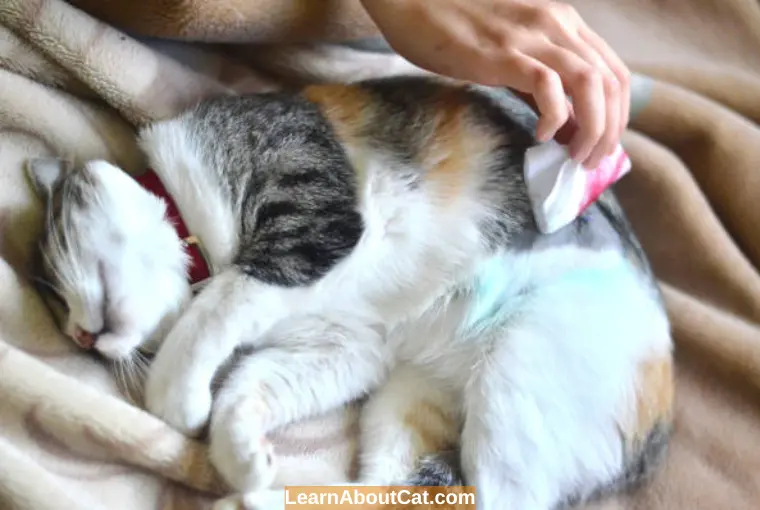
- Anesthesia complications: As with any surgery requiring anesthesia, there is a risk of respiratory or cardiac issues. However, these complications are rare in healthy cats that are properly screened before the surgery.
- Infection: In rare cases, cats may develop an infection at the site of the incision after spaying. This can be treated with antibiotics.
- Bleeding: Although rare, excessive bleeding during or after the surgery can occur. This is more likely to happen if the cat is in heat at the time of surgery.
- Adverse reaction to sutures: In some cases, cats may have an adverse reaction to the sutures used to close the incision site. This can result in redness, swelling, or discharge from the incision site.
Prior to spaying, make sure to talk to your veterinarian about the potential risks. Your veterinarian can also provide you with information on how to minimize these risks and ensure a safe and successful surgery for your cat.
Additionally, make sure to closely follow your veterinarian’s post-surgery care instructions to help prevent complications and ensure a smooth recovery for your cat.
Interesting Reading: Can a Neutered Male Cat Still Get a Female Pregnant?
What is a Cat’s Typical Behaviour After Getting Spayed?
A neutered cat is more relaxed. If your cat doesn’t want to mate, it could be calmer and less likely to produce cat calls or to be constantly looking for a companion. Males are no longer enticed to spayed animals because of their invasive approaches and serenades. Additionally, neutered cats are friendlier.
Frequently Asked Questions
How long does it take for a cat to recover after spaying?
The recovery time for a cat after spaying can vary depending on the cat’s age, health, and other factors. Typically, it takes about 10-14 days for the incision site to heal and for the cat to recover fully.
Can spaying cause weight gain in cats?
Spaying itself does not cause weight gain in cats. However, spayed cats may be more prone to weight gain if they are not provided with a balanced diet and regular exercise.
Will my cat’s personality change after spaying?
In general, spaying does not cause significant personality changes in cats. However, some cats may become more relaxed or less aggressive after the procedure.
Can my cat go outside after spaying?
It is generally recommended to keep your cat indoors for at least 10-14 days after spaying to allow for proper healing of the incision site. After that, you can slowly reintroduce outdoor activities.
Do I need to change my cat’s diet after spaying?
In general, you do not need to change your cat’s diet after spaying. However, it is important to monitor your cat’s weight and adjust its diet as necessary to prevent weight gain or other health issues.
Final Words!
Spaying is an important part of responsible cat ownership. While it can be nerve-wracking to think about your cat undergoing surgery, the benefits of spaying far outweigh any temporary changes to your cat’s behavior.
Female cats who have been spayed modify their behavior in numerous ways. Stress symptoms will start to show in your cat shortly after the treatment. This may manifest as intense clinginess, excessive love, or shyness and withdrawal. Your cat’s personality will dictate which way it moves.
However, these changes are just momentary. You will start to see long-lasting improvements about 6 to 8 weeks following surgery. This is the time frame necessary for the hormones to return to balance and for you to completely appreciate the advantages of the surgery. The most obvious effects are reducing heat-related behaviors such as spraying, roaming, vocalizing, and mood.
Related Posts:
Who is Isabella?
My name is Isabella, and I am a dedicated and knowledgeable cat enthusiast. With years of experience caring for cats and a deep love for felines, I made a mission to help other cat lovers navigate the challenges of cat ownership.



